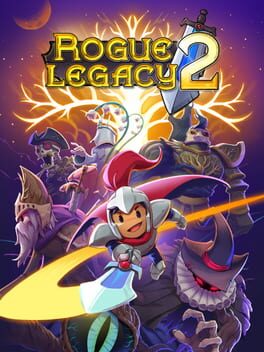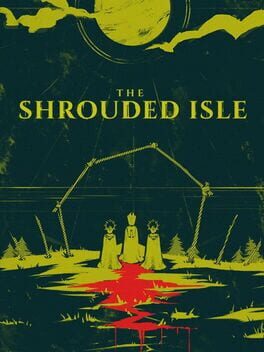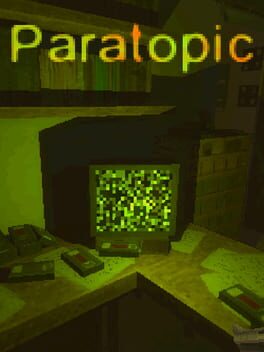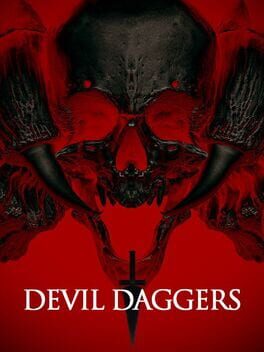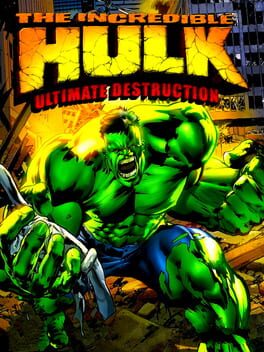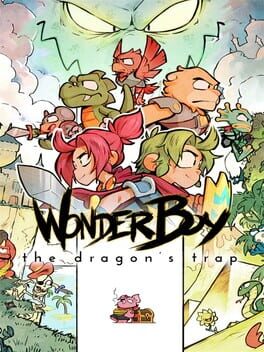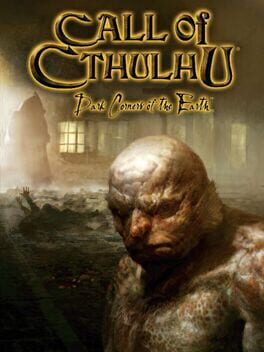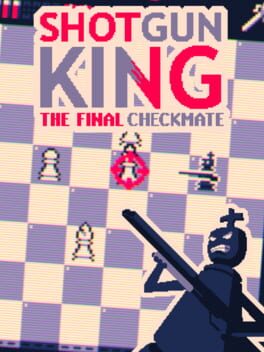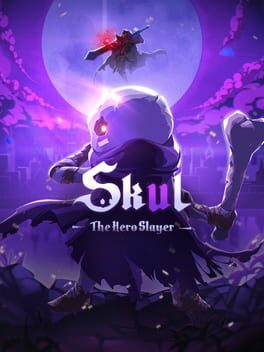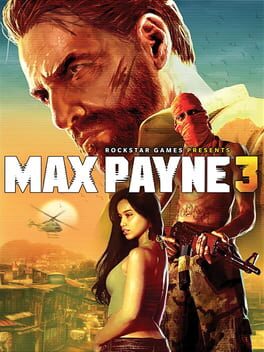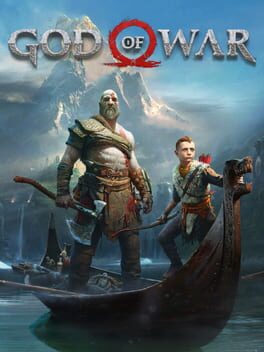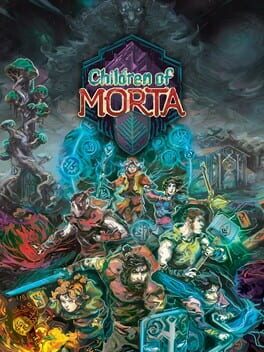BeauTartep
2020
First and foremost, it has to be said that the improvements this makes on the design of the first Rogue Legacy are not merely additive but exponential. Rogue Legacy, god bless it, a decade old now, holds in its aging, withered helm the perfect ur-example of how the indie sphere developed across the 2010s - a college that, after being let loose by digital distribution, progressed from a ragtag group of games that hit notoriety, flourishing most when either stripping down the mechanical breadth of concurrent AAA games to a more cohesively succinct experience or when revising and iterating on too hastily discarded design ethea of yester-generations coupled modern insight, to a glut of games that had not the editorial spirit to cut on bad humour/interface/reference marring their experiences nor the mechanical know how to convey any consistent emotion across their verbsets, art assets, or writing; Rogue Legacy, which excitingly took the twitch sword and board combat of Castlevania with a mixed in progression system of MMO character building, became a wooly little beast of a game, a game that felt dim and chalky to play, that plodded treacherously through an ill mannered narrative, and which catered to the lowest border of aesthetic dullardry. It was the perfect game to never revisit.
Rogue Legacy 2, much more the germinal remake/refurbishment than prototypical sequel, improves on every conceivable platform that, in hindsight more than with historical circumspection, Rogue Legacy failed on with incredible ability. The movement feels legitimately intuitive, whereas the clunky, phlegmatic platforming of RL1 was ATARI level basic, and is built about plastic boundaries for which the blueprint of dashing, jumping, and talent-ing around the world is joy in motion. The combat, while still quite basic, has shown to be a grand wheel around which many spokes may turn, with each class navigating combat with differentiated schema that make the repetition of the roguelike base much more presently titillating than is typical when transitioning from a senior run to a fresh go at the castle; RL1 much more relied on the back-end change ups between classes, tweaking numbers almost in totality vs augmenting play, leading to a very weak iteration loop - repetitious as opposed to transformative. The enemies are carried over in large scale, but are included in more exciting encounters that play off the dispatch strategies their abilities intermingle amongst, whereas their counterpoints in RL1 almost exclusively occupied the same corridors and presented the same threats in any scenario throughout the game. Of course, that upgrade in quality also comes alongside the vastly improved world design, transforming every environment into not only a thematically distinct stage but stages considering different extensions of the player verbset to limits that were not even hinted at much less explored in RL1. Aesthetically, the improvement is subjective; for my part, I think the time that the devs had to develop and rework the, far too blurry, in my opinion, line between sword and sorcery and Looney Tunes is, at the very least, consistently readable and coherent, and at time even pleasing, when compared to the pixelated and mushy mess of RL1.
On the whole, nothing can be said about RL2 without first glancing at its heights from the comparatively low summit of its predecessor. Having then made that comparison and said my peace about it, there can at least be some enumeration on what doesn’t succeed in this game, and there is still quite a great deal. The narrative framing, and writing that supports that framing, is terribly sophomoric: it balances competing tones of dower agnominity with childish slapstick humour at incongruous, even simultaneous, moments. Oftentimes within a journal entry expounding the entirety of the avatar’s present purpose within the game world, it will have passages explicating the ravages of famine and pestilence on the population, only to follow it up with how an estuary’s hoarding of the nation’s pizza supplies are giving him gas - which in itself is pitiable and weakly conceived, but it every bit of prose is failed as well by its stylistic composition, using the same short, paltry structure and voice. The art, while more holistically cohesive than in the previous games, similarly fails to impress. The only aesthetic marker I can attach to it would be something akin to ‘DnD sticker book’: nothing is impressively rendered or original, and the only small moments of genuine impressiveness come at the improved scale of the game in comparison to RL1. The gameplay, while certainly not bad, does not feel genuinely iterable in the roguelike progression pathing like we’ve seen develop in games like Dead Cells or Gungeon, so while the classes make replayability more titillating, the overall structure of its replayability feels flawed and stultified. If there was less of a scope in the game’s economy, and the meta-progression were instead focused more on the utilization and mastery of the cast of classes available to the player, in a way similar to Prey: Mooncrash, wherein the various abilities of your avatars are implemented so as to further progression for each other, the iterability of the game’s structure would feel more exciting to venture in with continued newness and unknowability. It’s also a bit too long for me, but some people latch onto any roguelike and will milk it utterly dusty, so while this made my time with the game somewhat tedious, I understand the impetus behind prolonging the game’s normal campaign.
Rogue Legacy 2, much more the germinal remake/refurbishment than prototypical sequel, improves on every conceivable platform that, in hindsight more than with historical circumspection, Rogue Legacy failed on with incredible ability. The movement feels legitimately intuitive, whereas the clunky, phlegmatic platforming of RL1 was ATARI level basic, and is built about plastic boundaries for which the blueprint of dashing, jumping, and talent-ing around the world is joy in motion. The combat, while still quite basic, has shown to be a grand wheel around which many spokes may turn, with each class navigating combat with differentiated schema that make the repetition of the roguelike base much more presently titillating than is typical when transitioning from a senior run to a fresh go at the castle; RL1 much more relied on the back-end change ups between classes, tweaking numbers almost in totality vs augmenting play, leading to a very weak iteration loop - repetitious as opposed to transformative. The enemies are carried over in large scale, but are included in more exciting encounters that play off the dispatch strategies their abilities intermingle amongst, whereas their counterpoints in RL1 almost exclusively occupied the same corridors and presented the same threats in any scenario throughout the game. Of course, that upgrade in quality also comes alongside the vastly improved world design, transforming every environment into not only a thematically distinct stage but stages considering different extensions of the player verbset to limits that were not even hinted at much less explored in RL1. Aesthetically, the improvement is subjective; for my part, I think the time that the devs had to develop and rework the, far too blurry, in my opinion, line between sword and sorcery and Looney Tunes is, at the very least, consistently readable and coherent, and at time even pleasing, when compared to the pixelated and mushy mess of RL1.
On the whole, nothing can be said about RL2 without first glancing at its heights from the comparatively low summit of its predecessor. Having then made that comparison and said my peace about it, there can at least be some enumeration on what doesn’t succeed in this game, and there is still quite a great deal. The narrative framing, and writing that supports that framing, is terribly sophomoric: it balances competing tones of dower agnominity with childish slapstick humour at incongruous, even simultaneous, moments. Oftentimes within a journal entry expounding the entirety of the avatar’s present purpose within the game world, it will have passages explicating the ravages of famine and pestilence on the population, only to follow it up with how an estuary’s hoarding of the nation’s pizza supplies are giving him gas - which in itself is pitiable and weakly conceived, but it every bit of prose is failed as well by its stylistic composition, using the same short, paltry structure and voice. The art, while more holistically cohesive than in the previous games, similarly fails to impress. The only aesthetic marker I can attach to it would be something akin to ‘DnD sticker book’: nothing is impressively rendered or original, and the only small moments of genuine impressiveness come at the improved scale of the game in comparison to RL1. The gameplay, while certainly not bad, does not feel genuinely iterable in the roguelike progression pathing like we’ve seen develop in games like Dead Cells or Gungeon, so while the classes make replayability more titillating, the overall structure of its replayability feels flawed and stultified. If there was less of a scope in the game’s economy, and the meta-progression were instead focused more on the utilization and mastery of the cast of classes available to the player, in a way similar to Prey: Mooncrash, wherein the various abilities of your avatars are implemented so as to further progression for each other, the iterability of the game’s structure would feel more exciting to venture in with continued newness and unknowability. It’s also a bit too long for me, but some people latch onto any roguelike and will milk it utterly dusty, so while this made my time with the game somewhat tedious, I understand the impetus behind prolonging the game’s normal campaign.
2017
I'm deep in the Elden Ring pit along with everyone else, so to buoy me in my most frustrated moments with Miyazaki I'm playing games that are comprised of short, non-twitch reflexive mechanics that try more to inform a thematic gestalt comprised of bursts of rhetorical play and aesthetic cohesion rather than with traditional game worlds and narrative. The Shrouded Isle is that, very specifically indie, ethos to a fault - it takes maybe an hour to explore the ludo-narrative framing, though the game does have mechanical breadth enough to encourage the patented 'gamer get achievement' playthroughs 2-7, even if those runs take place in time well beyond after I-get-it button has been pressed, and the narrative direction is pathed nearly exclusively in the player interaction with the textual states of trans-iteration (meaning that the pathos of any game state is informed by a mechanical interaction/choice made by the player in different kind to the game's prompt). The general aesthetic is cohesively cruel: the eyes in all the NPC's portraiture are obscured, taking away the 'windows to the soul', reinforcing an idea that concrete and severe actions cannot inform a, happily built and maintained, holy intervention in place of democratic connectivity. The muted and washed colour palette paint a stark binary: you have complete black void or a sickly, gory, otherworldly pallour to bloat in. The text is short and opaque enough to make the choices feel tantalizingly uninformed but contain enough purchase to infer things worse than a more descriptive block would allow.
However, the game's best qualities are soon reduced to how they don't really nail their contextualization of the gameplay. Certainly, on the first playthrough, the ball bearings are scraping motion and every death feels either like a gruesome victory or a selfish, political assassination - but, on repeat playthroughs, after you know what vices are inscorned in which lose states, and how they tie in with the petty family squabbles which demand only a puppy dog level of attention to avoid, the literal meters (which, like, c'mon, y'all could've made a less spreadsheet like representation of these values) start to domineer over the flavour, and the pure number values of play overshadow all metaphor about religious superstructures. The incursion of 'illnesses', the promotion of virtues and vices, the staunching of rebellious cohorts; all the possible interpretations of the text become number go up and number go down button pressing even before a victory state is reached, and with so simplistic a play styling, I don't think the roundness of the text and art are able to be as penetrated as the devs would've liked.
However, the game's best qualities are soon reduced to how they don't really nail their contextualization of the gameplay. Certainly, on the first playthrough, the ball bearings are scraping motion and every death feels either like a gruesome victory or a selfish, political assassination - but, on repeat playthroughs, after you know what vices are inscorned in which lose states, and how they tie in with the petty family squabbles which demand only a puppy dog level of attention to avoid, the literal meters (which, like, c'mon, y'all could've made a less spreadsheet like representation of these values) start to domineer over the flavour, and the pure number values of play overshadow all metaphor about religious superstructures. The incursion of 'illnesses', the promotion of virtues and vices, the staunching of rebellious cohorts; all the possible interpretations of the text become number go up and number go down button pressing even before a victory state is reached, and with so simplistic a play styling, I don't think the roundness of the text and art are able to be as penetrated as the devs would've liked.
2018
So the stated influences of this game, Silent Hill and 30 Flights of Loving, are both games that I love - like, 30 Flights is one of my favourite games of all time, and Brendon Chung is, maybe, one of the best game designers working today, in my opinion. But with what elements and eccentricities emphasized do those game succeed enormously, Paratopic rides the, few, admittedly, foibles that have minorly dragged on the meteoric heights Silent Hill and 30 Flights reach. The art design of Paratopic immures the PSX immersion that only 1999 and the childlike holistically accepting verisimilitude combo could deliver in Silent Hill, but wherein the usage is grand, the actual representation feels meeker and, frankly, sophomoric. The sound design doesn't equally reflect the crystalline impressionism of a poorly wrapped world in comprehensible tinsel, instead sounding like what it is, a VO team that wrote a scary script first and affected scary performances without respect to their reach. In fact, I kind of feel that the nostalgia and referential titillation of media just, you know, older is kind of the driver of the monotony here. The tapes, the 'Friendo', the graphical design - it all smacks of childlike fear of the unknown which is only unknown because of youthful ignorance and not human incapacities. As far as 30 Flights goes, the jarring editing cuts therein works due to the nature of the narrative demanding the oneiric retrospection of a job, and life, decidedly not well lived - as well as informing the player of the broadness of a reality and lived in surreality that weaves more capaciously than Paratopic can manage by cutting across fewer locations with more consistent grounding and firmament. I don't know, it just felt a bit spaced out to me.
2016
Not really for me! I have never played a character action game which truly clicked with me, and the aesthetics of this era of Marvel comics just, I don't know, seem like they have the Big curse from Big - children in adult bodies. I didn't do any of the sidequests and felt vastly more powerful than anything thrown at me, which is great for a Hulk simulator, but it didn't captivate me enough to appreciate any systemic complexity within. Probably great for people in the game's pocket, but only so so for someone like myself who generally doesn't even terribly like Platinum games.
Despite the richness of the game's updated 2D cell animation inspired graphics mixed with European BD inter title sequences, the overall product is hampered by the team's rigid adherence to the play possibilities of the original game; moving, attacking, platforming - all of these activities are betrayed by the expressiveness of the animation quality in how restricted and rigid they feel in comparison. If the devs had managed to flesh out the systemic interplay with their updated toolset, something which was inhibited in the original game and so created the poor premises that attract the misplaced reverence for the play available herein, then the game could be among some of the more delightful retro remakes of the last few years. As it stands, the play is a chore and is nostalgic for only a few minutes before becoming a tedious trek to see how languished the visual presentation is in showing off the game's best features.
2018
I came at this game with very little nostalgia for the design ethos of the 90s shooter; I've never played Quake, Duke Nukem 3D, Wolfenstein 3D, Marathon, Doom 2, or Hexen, largely because what little of that era I've tapped into felt like an exercise in historically contextualizing the lineage shooters have much diverged from than my seeking out a delivery mechanism of adrenaline fueled, non-stop aggressive play that is so frequently touted as the main characteristic of early 90s shooters. And, if I'm being honest, that type of hyperactive, all out play is not terribly enticing when I think about it abstractly in comparison to the mechanized, Ford-like construction of a dynamic encounter curve, differentiated with sculpted ebbs and flows of broader systemic play, that I had grown up with in 2nd gen FPSs, some of which purposely de-emphasized the shooting part of FPSs, so as to, maybe foolishly given the marketability the genre went through for 15 years after Doom, force a growth out of the simplistic interaction style gunplay enforces in a systemic state.
Nostalgia, however, has very little to do with Project Warlock's genuine thrill. Where Half-Life felt like the next iteration of the genuinely necessary, yet difficultly foreseen, integration of fidelity into game worlds that the systems pioneered and actionalized by the early Id games, only hinted at in their early shooter catalogue, affected with merely minor afterthoughts, Project Warlock (and DUSK and, to a much lesser extent, Doom (2016)) takes the mechanical interaction a step beyond the game world dissonance that shooters have largely been mired in since Duke Nukem 3D gave way to Half Life gave way to Halo gave way to Bioshock, etc. etc.
While the grounding of the play within a concerted and asserted cause and effect extension of the actual verb set beyond shoot at _____ becomes shot _______, the shooter had to grapple with shot ________ becomes why have you shot _________? As modern 'games about games' have shown, this is a largely fruitless endeavour to interrogate in AAA games because systems orientation for that initial question investigates all necessary questioning but then reinforces an ignorance of it with a game's recidivistic rhetorical structure. Project Warlock plays both sides of the bargain with the framing and world design knelling only gunplay without absolutely abstracting it. Doom did something similar obviously but the context of its gameplay came before it could be regressed, and as such, progressed.
Even if you look at Project Warlock in wireframe, the tunnelling of the PC is deterministic in a way that seems counter-intuitive - yet it sells the world with its play in a way that something like Deus Ex never could with its mechanical interactions. And what's great is you never would wireframe PW because the package is so enticing that the idea of dropping the veneer plays into the arc of the excellently scant narrative explication.
Amazing soundtrack too, wow.
Nostalgia, however, has very little to do with Project Warlock's genuine thrill. Where Half-Life felt like the next iteration of the genuinely necessary, yet difficultly foreseen, integration of fidelity into game worlds that the systems pioneered and actionalized by the early Id games, only hinted at in their early shooter catalogue, affected with merely minor afterthoughts, Project Warlock (and DUSK and, to a much lesser extent, Doom (2016)) takes the mechanical interaction a step beyond the game world dissonance that shooters have largely been mired in since Duke Nukem 3D gave way to Half Life gave way to Halo gave way to Bioshock, etc. etc.
While the grounding of the play within a concerted and asserted cause and effect extension of the actual verb set beyond shoot at _____ becomes shot _______, the shooter had to grapple with shot ________ becomes why have you shot _________? As modern 'games about games' have shown, this is a largely fruitless endeavour to interrogate in AAA games because systems orientation for that initial question investigates all necessary questioning but then reinforces an ignorance of it with a game's recidivistic rhetorical structure. Project Warlock plays both sides of the bargain with the framing and world design knelling only gunplay without absolutely abstracting it. Doom did something similar obviously but the context of its gameplay came before it could be regressed, and as such, progressed.
Even if you look at Project Warlock in wireframe, the tunnelling of the PC is deterministic in a way that seems counter-intuitive - yet it sells the world with its play in a way that something like Deus Ex never could with its mechanical interactions. And what's great is you never would wireframe PW because the package is so enticing that the idea of dropping the veneer plays into the arc of the excellently scant narrative explication.
Amazing soundtrack too, wow.
A worthwhile permutation on deck building relying on stratified layering of chess mechanics with increasing difficulty puzzle levels to manage progression. Once you beat the game, the real limitations of how much content there is in the game becomes extremely apparent but until that point, it's an extremely engaging little chess mixup. If they added even 10 or more new cards and mix ups, or changed terrain options or vassal armies, really any added content, this could easily become a roguelike to class amongst the best.
I think this period of alchemical noodling about in the mechanical limits of the various roguelite 'genres' (which, like, do we consider Skul more of a Spelunky-like or a Rogue Legacy-like or a Roguelite platformer or just an action platformer with roguelite elements? What is the bounding box on procedurally generated levels and perma-death?) is terribly interesting - an atomized collection of devs essentially doing a research project on a scale of a worldwide anarchic autopsy trying to figure out the points in which the skeletal infrastructure of 'necessary' genre conventions can be motivated by disparate, muscular coagulating play. It feels like with that tide, we're moving away from, "what if this genre, but roguelike?" to a more exciting, "what does roguelike framing do to these mechanics?" which is how you get from Slay the Spire to Monster Train to Griftlands - the first is basically a CCG with a loop that lasts 45 minutes and the last is a procedural RPG that does its storytelling through cardplay, contextualized by roguelike elements as minute character arcs, or really, build arcs. However, that grab bag approach loses something that the earlier Frankensteinian smash-this-into-perma-death approach kept closer to chest in its rigidity: the confirmation of mechanical solidity in its original form. Skul fails not due to its ambitions but to how it only loosely ties together the disparate collection its conglomerated under the roguelite horizon; the upgrade trees are weakly procedural and offer no tantalizing upgrade path but merely an assumption that play will hit par; the platforming is minimized because the world architecture needs to suffice for combat platforms as well as traversal, all generated and linked procedurally; the enemy behaviours are simple yet telegraphed inconsistently because the devs needed to make something that was encounterable yet dangerous to too many different Skull approaches; the tacked on "extra" sections are aided not at all by the pick up and play approach because the bite sized play sessions are then rendered inconsistent in what they are saying they deliver. Also, the writing and character design just kind of sucks.
2012
I can’t speak to what genre pretensions the Max Payne series held before the IP’s third entry, having never played those first games for myself; Remedy have not yet proven themselves to be a consistent developer for me, having made at least a few games which ranged from downright rotten, such as Alan Wake, to mediocre fare worthy only of listing in internal documents for their legal department, such as Quantum Break or the Crossfire campaign. Despite those dismal dregs though, one excellent game helmed by their studio, Control, while not exciting me as of yet to dive through hours of their backlog, at least maintains some ear perking for the studio. So I left the Max Payne series alone - I enjoy noir pastiche just as much as the next person, but I don’t need to wrestle my way through the muddy channel games waded through on the way from Tomb Raider to Gears of War when I have Stray Bullets, The New York Trilogy, and Brick at my disposal. That said, after hearing for years the critical discussion on how Max Payne 3 transformed the series’ neo-noir negging into a wash Michael Mannian existential burden, I thought that the experience would at least breeze by quicker than any involving emulating the previous two entries. After playing the game, and the experience proves for me I still have very little if any particular love for Rockstar, I think I had the entire thing backwards. Max as a character is, I think, worth anchoring a world around, certainly in a way that Alan Wake never manages to deserve, and the gameplay in Max Payne 3 has moderately solid bones which substantiate more the desperation and devil-may-care attitude to his mortality than other third person shooters, although those duck and cover mechanics are slathered in technical and design encounter muscles overgorged on the steroids that Rockstar insists in putting into every game they’ve ever had the misfortune to direct. The writing is lightly hammy, intensely melodramatic, yet conceived of with a grandness that doesn’t overbear on or overreach its scope, walking that fine line between truly sincere noir stories such as In a Lonely Place and totally absurd tales such as Dark City. Max’s narration in particular anchors the world, with Herculean strength too, given the mawkish brutality of Rockstar’s Brazil and Hoboken, allowing the player to, in equal measure at least to Payne, take nothing too seriously without losing the human stakes involved. The weirdest and least eloquent way I can describe it is if someone took Hot Fuzz, which upturned the conventions of Michael Bay films with bold miniaturization, and made a full right turn on that film’s right turn, back into sincerity without losing the heart it gained by filming actual humans with actual hearts in place of Bay’s nihilistic super killers.
The play, as I can’t compare it to the previous Payne games, is fine to paltry. The shooting gets stale very quickly and any exploration is so pointlessly barren that to move in the world is to render all the detail of the story into boxy, Source engine corridors. Rockstar’s crasser elements come out in force whenever they are not remaining true to the strength of the game, lovingly framing the destruction of the human form with borders of bullets and bombs. Still, it was never actively frustrating or painful, and when soundtracked by the sultry sweet tingle of Payne’s narration, it made the 10 hours go by like butter and brown sugar.
The play, as I can’t compare it to the previous Payne games, is fine to paltry. The shooting gets stale very quickly and any exploration is so pointlessly barren that to move in the world is to render all the detail of the story into boxy, Source engine corridors. Rockstar’s crasser elements come out in force whenever they are not remaining true to the strength of the game, lovingly framing the destruction of the human form with borders of bullets and bombs. Still, it was never actively frustrating or painful, and when soundtracked by the sultry sweet tingle of Payne’s narration, it made the 10 hours go by like butter and brown sugar.
2018
I think there is definitely a small lack in the critical engagement with Souls influence being the medium through which a reinvestigation of the mechanics established for character action in the PS2 era is now underway in games that are less inspired by the Souls games design than by the developments From Soft allowed to take place in character RPGs. The slowing down of combat, the newer focus on world design as intiated by honing of mechanics with depth as opposed to breadth, and expressionistic play favoured over prescriptive mechanics are all things that the medium is working over in the same way that, after RE and Super Mario 64, designers worked over camera/movement integration within spatial play. That reckoning has just as much to do with the slower pace and decidedly pathos driven storytelling of GoW as does the growth in the storytellers understanding of the character Kratos is in the hands of an older generation of players, and I think if there is anything that Souls influence still can potently do, it's show how mechanics effect more than strict play.
2020
2021
The build as it stands of this writing might look entirely unlike what the fully implemented version of Vampire Survivors will be, but for the time being it's hard to imagine the gameplay loop changing all that much. Regardless, what is available now is a humourous enough riff on both Castlevania iconography and how idle play can be without actually calling that play constituent of an idle game (which may actually have more to do with animation than interaction given the state of idle games in 2022). It's often frustrating, and more often inelegant, but the warts are more well displayed as character and purposeful jank than as blockage in the game's pipeline to fun - momentum is completely off curve but in a way that makes the first 5 minutes of any match the most engaging, so you are able to get a short play session that doesn't drag out the misery of a dead run or a long play session that, while laughably simple, is at least well rewarded for its length.
2019
I’m always a little bit concerned about my evaluations on games being informed first and foremost by kinesthetic ‘propaganda’, or rather that games designers catch me with a lovely aroma by fronting their dishes with the chemically enriched, sugary sweets of mechanics that, if nothing else, at swallows (or twitches) first and/or fondly remembered just feel good in the hands for myriad reasons departed from the efficacy or placement of those mechanics. The argument that Errant Signal makes when talking about Rage 2 resonates with me any time I boot up a game that requires a fast, kinesthetically engrossed type of play; there is a tendency, I think, in a lot of us playing games, for reasons due to the marketing, history, and time/life affordances of the medium, to think of these little programs as living disembodied in our fingers with rent paid to mind-body dualism first as pieces of art and cultural politic second, if at all. Trying to alert myself to what feels good in a game, or rather, what mechanism is approbating pleasure in the ideals of the game’s interaction set for me, often reveals a frightening, or possibly charming if you strive for reduction in design, miniaturization of the program's feigned culpability in the teamwork affected by its user and itself: with regards to the situation of play, this façade can be even smally erected with mere toggling of the just right physics shoving blocks into launch in a blank Unity model. That’s a bit foul of a reduction to bring an art form to, but in the same way euphony without substance can be intoned in poetry (and for some schools of poetry, is the most desirable and earnest form of substantiating the style an art; likewise, for some game critics and creators, playfeel is the foremost elevator of the form), much of what initially implicates our understanding of games can be moderated by the disassembling of the inhabitation we must extend to the program being worked through. In Children of Morta, the umbrage is that of a model forest casting long by bright incandescents lent glittering gewgaws, or rather it is able to be walked through if you shuffle amongst the shadow leaves but don’t expect the scent of pine, the comfort of lumber, the solitude of nature, or the neighbouring of wilds.
It’s less to say that in Children of Morta that the facsimile of thematic and iconographic decoration is superceded by play but more that CoM is another example of big name indies that try to elevate the ideals of storytelling without recusing their play of the power-fantastical standard of the AAA and ‘turn-your-brain-off’ entertainment that makes the games world more populous with hobbyists and less of those engaging preeminently as critical or artistic enshriners. There is no harm in that ideal, and certainly is necessary if the medium is to continue perpetuation, not even to mention that the ease of play in kinaesthetic forward games is just as valid as euphonic first poetry and erotic first ballet and melodic first music, but as I said first above, any game that is kinaesthetic foremost in its engagement while still retaining pretensions of thematic depth have to walk a much more careful line than those games which treat its mechanical interaction as extensions of the thematic core.
And, unfair as it is, if you’re trying to commute your tone through voice-over and text, it should probably be well-written and engaging.
It’s less to say that in Children of Morta that the facsimile of thematic and iconographic decoration is superceded by play but more that CoM is another example of big name indies that try to elevate the ideals of storytelling without recusing their play of the power-fantastical standard of the AAA and ‘turn-your-brain-off’ entertainment that makes the games world more populous with hobbyists and less of those engaging preeminently as critical or artistic enshriners. There is no harm in that ideal, and certainly is necessary if the medium is to continue perpetuation, not even to mention that the ease of play in kinaesthetic forward games is just as valid as euphonic first poetry and erotic first ballet and melodic first music, but as I said first above, any game that is kinaesthetic foremost in its engagement while still retaining pretensions of thematic depth have to walk a much more careful line than those games which treat its mechanical interaction as extensions of the thematic core.
And, unfair as it is, if you’re trying to commute your tone through voice-over and text, it should probably be well-written and engaging.
